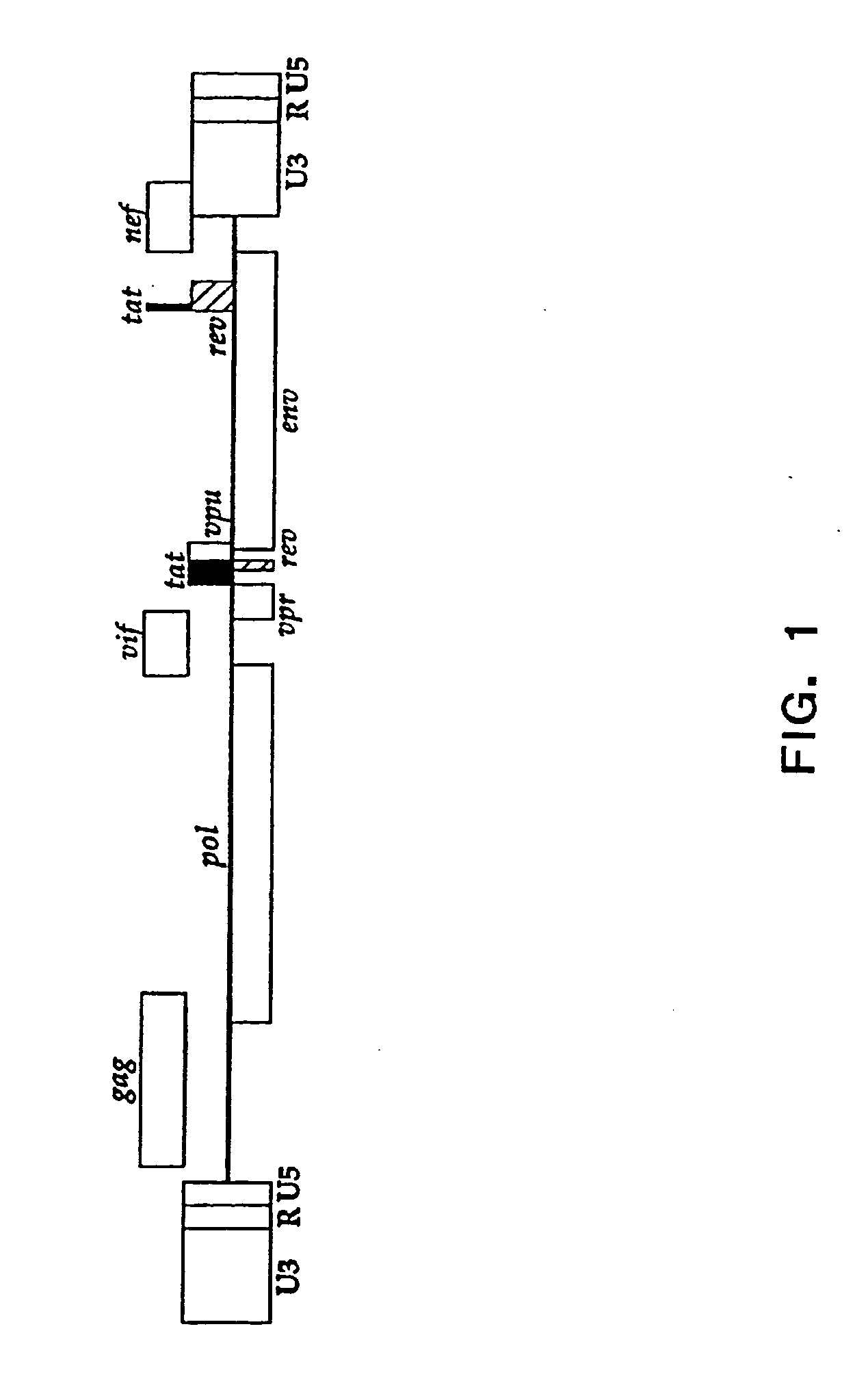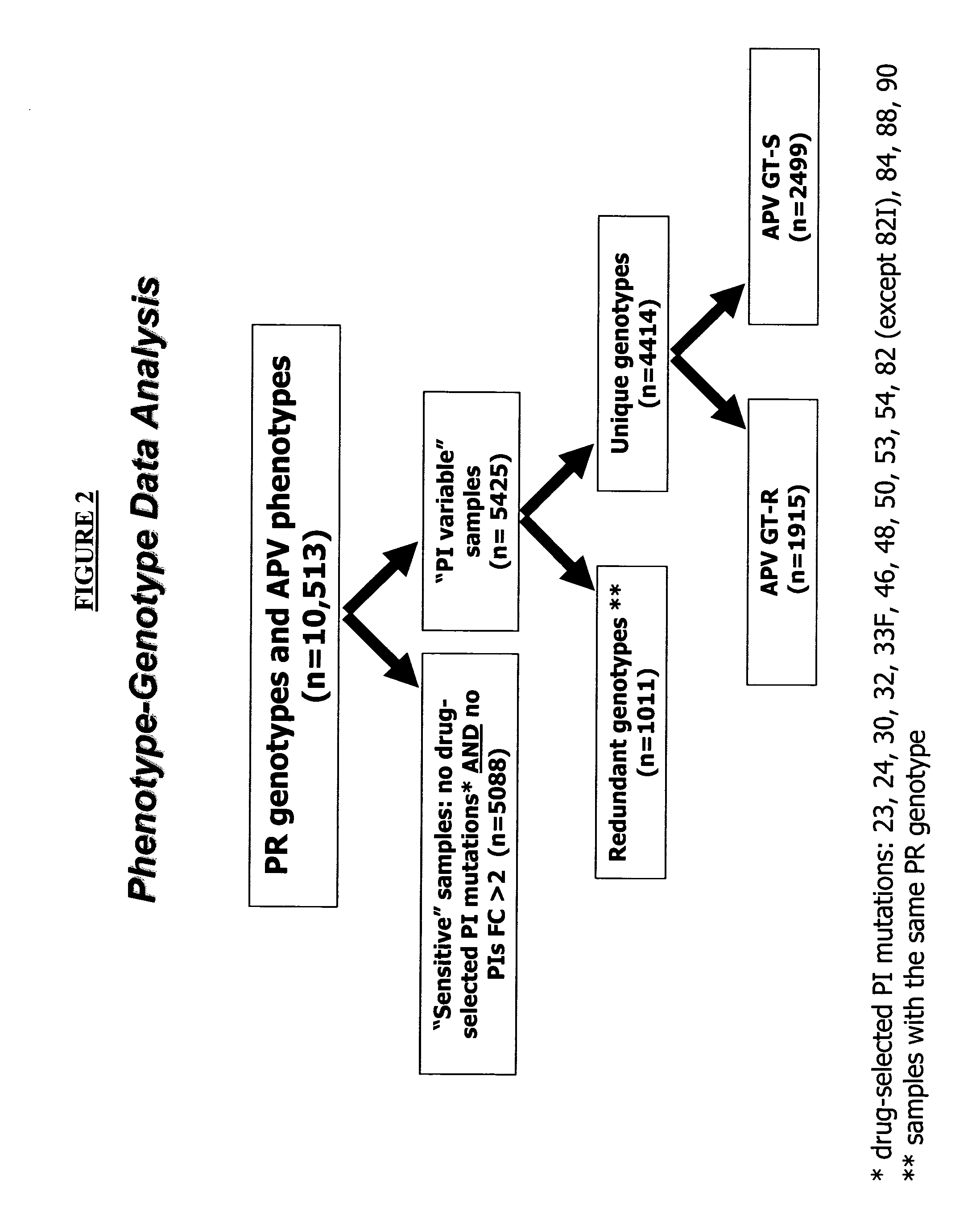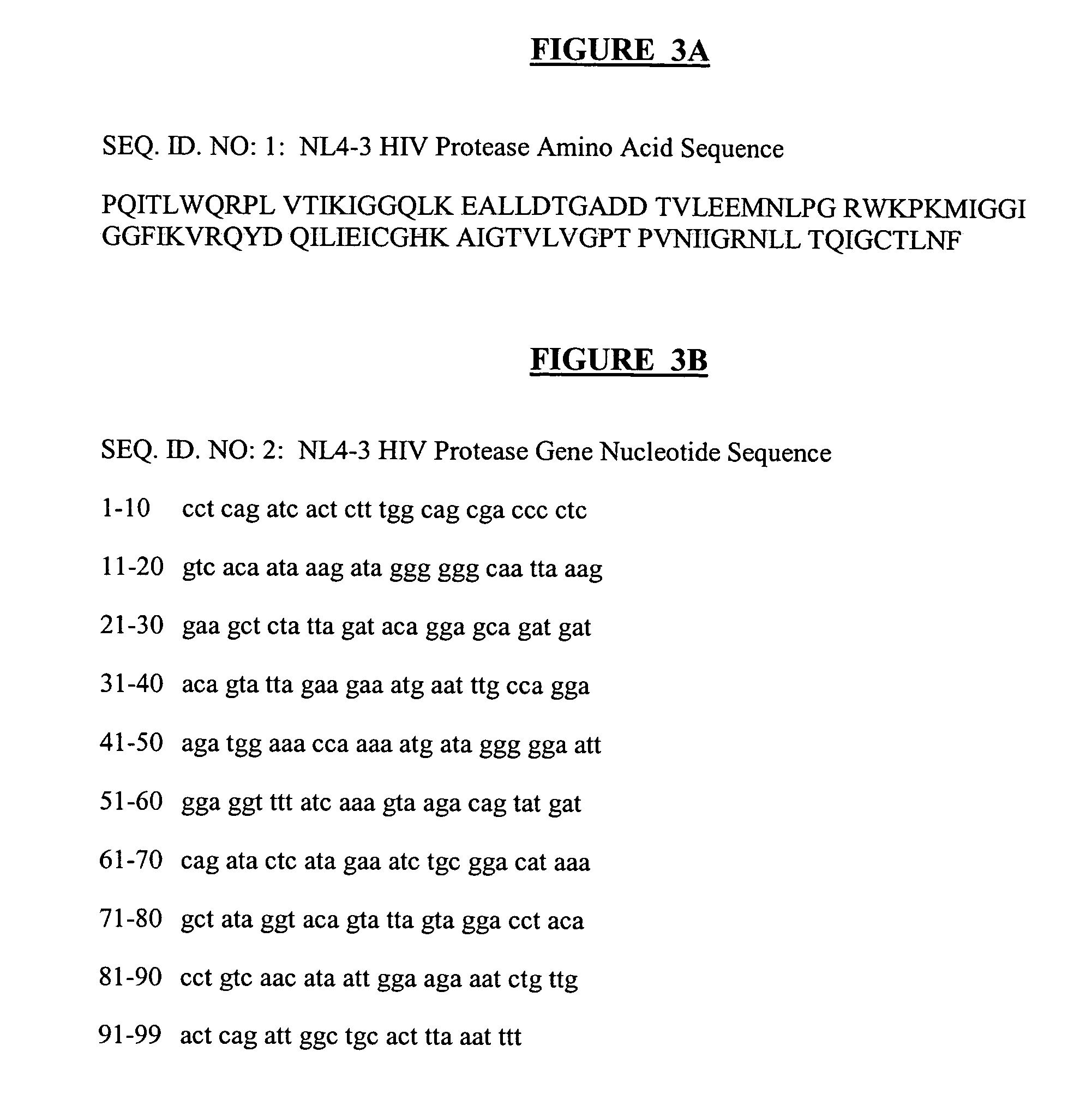Compositions and methods for determining the susceptibility of a pathogenic virus to protease inhibitors
- Summary
- Abstract
- Description
- Claims
- Application Information
AI Technical Summary
Benefits of technology
Problems solved by technology
Method used
Image
Examples
example 1
6.1 Example 1
Analysis of Patient Samples to Identify Resistance-Associated Mutations
[0170] This example demonstrates a method of analyzing patient samples so as to identify mutations that are associated either with increased or with decreased susceptibility to protease inhibitors such as amprenavir.
[0171] In order to determine the relationship between an HIV-1 strain's protease sequence and its susceptibility to treatment with amprenavir, a data set of 10,513 samples was used. From this data set, all "wild type" samples, i.e., samples with FC<2 for all protease inhibitors and no drug selected mutation were removed. FIG. 2 shows a flow-chart depicting the steps followed to arrive at a final set of samples that was analyzed in detail. The drug-selected PI mutations used as a criterion for removing a sample were those that occurred at amino acid positions 23, 24, 30, 32, 33F, 46, 48, 50, 53, 54, 82 (except 82I), 84, 88 or 90 of the HIV protease (FIG. 2). Next, samples with the same gen...
example 2
6.2 Example 2
Correlation of Amprenavir Susceptibility to the Mutations in HIV Protease
[0175] This example demonstrates the construction of an algorithm that correlates the mutations in the protease gene of an HIV with its susceptibility to amprenavir.
[0176] A data set of 4414 patient plasma samples was analyzed and mutations associated with reduced susceptibility to amprenavir were identified, as described in Example 1. The phenotypic susceptibility to amprenavir (amprenavir fold change) was analyzed as a finction of the number of mutations in the protease of the HIV present in a patient's plasma sample. The fold change for each sample was calculated by dividing the IC.sub.50 of amprenavir against the HIV from the patient's plasma sample by the IC.sub.50 for amprenavir against the NL4-3 (GenBank Accession No. AF324493) reference viral strain. The genotype data was obtained by sequencing the protease of the HIV present in each patient's sample and determining the sequence changes wit...
example 3
6.3 Example 3
Analysis of the PT-R, GT-S Discordant Group
[0180] This example demonstrates that certain mutations and certain combinations of mutations make a greater contribution to amprenavir resistance than others.
[0181] The samples in the PT-R, GT-S group of Example 2 correspond to viruses with no known primary mutations in the HIV protease associated with reduced susceptibility to amprenavir (i.e., none of V32I, I50V, I54L or M, or I84A or V). These viruses were phenotypically resistant (had an amprenavir fold change greater than 2.5) but were predicted to be genotypically sensitive (because they had none of the known primary mutations). Since the majority of the discordance for amprenavir is of the PT-R, GT-S type, the development of the algorithm focused on mutations which were associated with this phenotype, and not those that simply appeared along with a known mutation. Therefore, samples with known mutations (GT-R) were removed. This resulted in a total of 2499 remaining sam...
PUM
| Property | Measurement | Unit |
|---|---|---|
| Volume | aaaaa | aaaaa |
| Volume | aaaaa | aaaaa |
| Volume | aaaaa | aaaaa |
Abstract
Description
Claims
Application Information
 Login to View More
Login to View More - R&D
- Intellectual Property
- Life Sciences
- Materials
- Tech Scout
- Unparalleled Data Quality
- Higher Quality Content
- 60% Fewer Hallucinations
Browse by: Latest US Patents, China's latest patents, Technical Efficacy Thesaurus, Application Domain, Technology Topic, Popular Technical Reports.
© 2025 PatSnap. All rights reserved.Legal|Privacy policy|Modern Slavery Act Transparency Statement|Sitemap|About US| Contact US: help@patsnap.com



